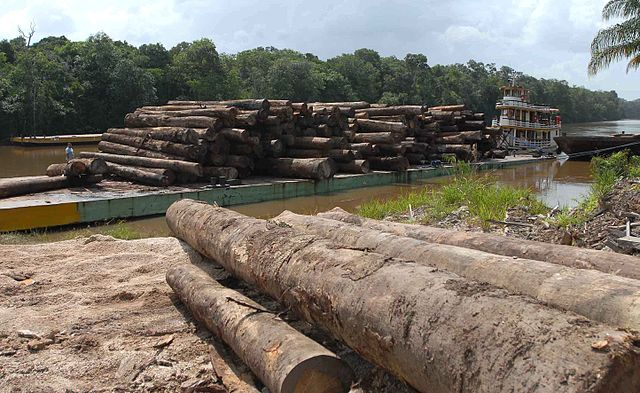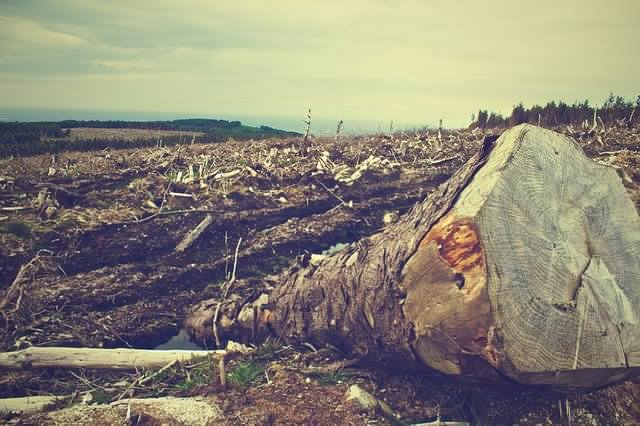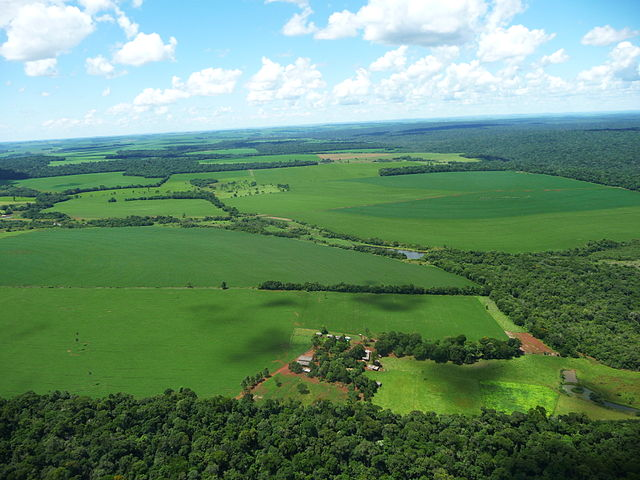The horrible consequences of deforestation
The forests comprise of the most important ecosystems on Earth. They provide shelter to millions of animal and plant species and also provide homes for millions of people. They are a rich source of food and the buildings we live in and the medicines that save us from disease. The forests play very crucial role in cleaning the air and water. They help to maintain a temperate climate and protect our planet from effects of climate change.

The forests have three main types; boreal, temperate and tropical. The boreal type of forest stretch across Canada, Russia, Finland, Norway and Sweden and make continuous belt around earth. These forests have been slightly changed by human beings.
The temperate forests are normally found in relatively warm weather conditions. These are found in North America, Europe and Russia. In Northwest coast of North America, there are some of the oldest and largest trees like Douglas fir which can grow up to 300 ft and California’s redwoods which can weigh up to 6,000 tons.
The tropical forests are found between tropics of Cancer and Capricorn and cover around 14% of Earth’s land. There are two types of tropical forest which include tropical rain forests and tropical dry forests. The tropical rain forests are complex and diverse type of forests. The tropical dry forests have limited species and provide shelter to large animals like elephant, lions and rhinoceroses. Most of the deforestation is taking place in tropical forests.
There are around 10 billion acres of forest in the world which cover 30% of world’s land. Around 36% of these forests are classified as primary forests. More than 80% of natural forests have already been destroyed. The rate of deforestation is about 35 million acres per year. The net rate of forest loss is about 18 million acres per year. The highest rate of deforestation is in Africa which lost more than 9% of its forest from 1990 to 2005. There was loss of 13% of forest area in Indonesia. 6% in Mexico and 4% in Brazil.

The simple definition of deforestation is clearing of large forested areas. It happens when large forestlands are converted for agriculture, pasture, residential or commercial purposes. It also happens due to non-human activities like fire or other natural disasters.
If we go back to ten thousand years ago, forests covered roughly half the Earth’s land surface. According to estimates of The World Resources Institute, only 22% of this original forest cover remains intact. Experts believe that Russia, Brazil, the United States, Canada, and China together have more than 50% of the world’s forest.
Throughout history, people have been clearing forests to make way for farms and habitation. However, the forests are decreasing at a rapidly increasing rate. According to recent study by the FAO, shows that the rate of global deforestation has doubled since 1980. Today an estimated 215,000 acres of forests are destroyed every day. Recently, the deforestation occurred mainly in Europe, Middle East and North Africa.
There are many causes of deforestation and they are related to each other. In many areas, deforestation happens due to logging or conversion of forestland for cattle grazing and farming. Additionally, as urban areas expand, land is often converted for housing, commercial and industrial purposes. There are also other factors which cause deforestation like mining, oil and gas extraction and other development projects.
The economic globalization is also responsible for most of increase in deforestation of tropical forests in developing countries. The poor countries having expanding populations and unequal distribution of wealth are particularly vulnerable. The people of these countries having limited options of making income clear the land for agriculture and sell the timber for their living.

According to experts’ estimates, as many as 150 million local people are living near forests worldwide and the deforestation is threat for their survival. With increase in industrial logging and other development projects like mining, the culture and livelihood of these people are becoming difficult. With deforestation, the land becomes vulnerable to drought, water tables fall and flood destroy the roads, crops and entire communities.
The forests provide habitat to many animals. More than 70% of animals and plants species live in forests. The tropical rain forests contain more than half of all plant and animal species of the world. Many rare species are specialized and they are found only in small areas of forests. For example, a rare periwinkle which is used in two widely prescribed cancer drugs is only found in Madagascar. The loss of forests has caused the periwinkle’s extinction. Many of the world’s endangered animal species depend on the forests for their survival.
Forests act as large sponges. They soak the rainfall and release it slowly. The forests help to reduce the amount of storm water and its impact. The canopies of the trees capture the rainfall which give it more time to evaporate directly into the air. The leaves of the trees slow the speed of precipitation and reduce its impact which reduces the soil erosion.
In order to stop deforestation, many proposals have been made by government agencies, NGOs and individuals. However the efforts can’t succeed without realizing the needs of local population. At local level, initiatives are required to help local population appreciate the value of forests. The local landowners and residents should protect the forests rather to destroy them.
Thank you for reading! Stay Safe!👋😌
Resources:
1.https://en.wikipedia.org/wiki/Deforestation2.Deforestation by Lydia Bjornlund
0
0
0.000
Good article, it is interesting that one of the biggest cases of deforestation and indiscriminate logging is happening in Venezuela but environmental groups are not saying anything.